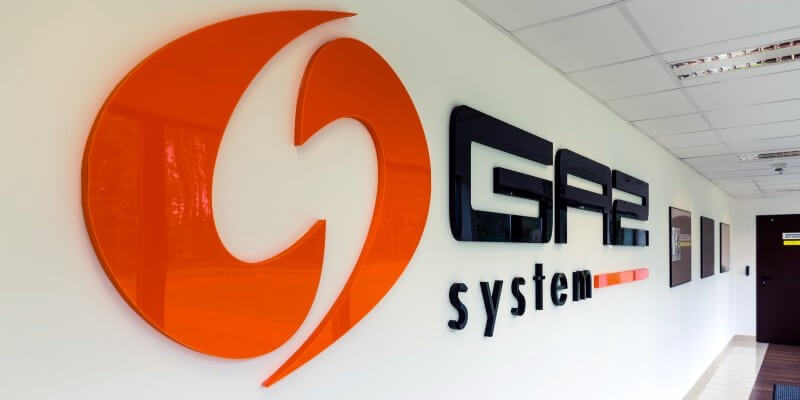Central and Eastern European countries have distinct potential for investment in gas infrastructure to meet expected growth in demand. The “Three Seas” initiative will help coordinate policy among its participants and promote the interests of the region to strengthen energy security and develop a competitive gas market. Not only will Three Seas countries benefit from this but also the EU as a whole – writes Bartosz Bieliszczuk from Polish Institute of International Affairs (PISM).
On 25 August 2016, 12 countries—Austria, Bulgaria, Croatia, Czech Republic, Estonia, Hungary, Latvia, Lithuania, Poland, Romania, Slovakia, and Slovenia—met in Dubrovnik, Croatia, to sign a joint declaration—the Three Seas initiative. The name comes from their location between the Adriatic, Baltic and Black seas and the compact sets as goals the construction of needed infrastructure for the single European gas market, improved security, and increased competition to control pricing. It refers to EU tools and strategies that aim to strengthen the region and eventually the whole EU. The need to develop infrastructure mainly on the north-south axis has intensified as a result of EU energy policy and Three Seas countries’ security perceptions and ambitions.
Cooperation Potential
The main challenge for Three Seas countries is building natural gas pipelines essential for strengthening their energy security and developing a competitive market. Because of a lack of diverse gas links, the countries in the region have been—and still are—highly dependent on a single supplier, Russia. That country’s domination of their markets makes them vulnerable to monopolistic practices, supply disruptions, and political pressure in other areas. Such concerning practices were confirmed by the European Commission in its antitrust case against Gazprom. Most Three Seas countries were significantly affected when Russia cut gas supplies during a dispute with Ukraine in 2008-2009. The need for investment in gas infrastructure was also emphasized after EU stress tests in 2014 simulating gas supply disruptions from the east.
Additional or new natural gas pipelines are necessary given the forecasted growth in demand in Three Seas countries. EC forecasts state that gas demand will increase by 14% from 2015 to 2030 while decreasing in the whole EU by around 4% in the same period. The biggest growth will be in Poland, Slovenia, Latvia, and Austria.
Infrastructure development also will allow better integration with states of the Energy Community. Its non-EU participants are obliged to adopt the bloc’s energy regulations. Three Seas countries share borders with six out of nine non-Union EC members, for which cooperation with the EU is a high priority: they are either official member candidates (Montenegro, Macedonia, Serbia) or have signed an Association Agreement (Bosnia and Herzegovina, Moldova, Ukraine).
Table 1. Three Seas Countries’ Gas Supply Dependence on Russia (2014)
| Demand (bcm) | Import (bcm) | Import from Russia (bcm)
|
Import from Russia (% of total imports) |
Monopolistic practices confirmed by EC |
|
| EU | 410.0 | 278.7 | 113.6 | 40 | – |
| Austria | 7.7 | 7.6 | 3.9 | 51 | Gas re-sale restrictions (abandoned in 2005 after EC pressure) |
| Bulgaria | 2.5 | 2.2 | 2.2 | 100 | Gas re-sale restrictions, unfair prices, “conditional” gas supplies |
| Croatia | 2.4 | 0.7 | 0.0 | 0 | – |
| Czech Rep. | 7.2 | 7.1 | 4.8 | 67 | Gas re-sale restrictions |
| Estonia | 0.5 | 0.5 | 0.5 | 100 | Gas re-sale restrictions, unfair prices |
| Hungary | 8.5 | 9.4 | 9.4 | 100 | Gas re-sale restrictions |
| Lithuania | 2.5 | 2.4 | 2.4 | 100 | Gas re-sale restrictions, unfair prices |
| Latvia | 1.2 | 1.2 | 1.2 | 100 | Gas re-sale restrictions, unfair prices |
| Poland | 16.0 | 11.5 | 8.8 | 76 | Gas re-sale restrictions, unfair prices, “conditional” gas supplies |
| Romania | 11.8 | 0.9 | 0.9 | 100 | – |
| Slovakia | 4.3 | 4.6 | 4.3 | 95 | Gas re-sale restrictions |
| Slovenia | 0.6 | 0.7 | 0.4 | 66 | – |
Sources: Eurogas “Eurogas Statistical Report”; Bruegel.
Between EU and National Ambitions
Three Seas countries are de facto at the centre of many EU initiatives and strategies and benefit from EU financial support. The Union supports these initiatives to ensure diversification of gas supplies and flexibility, important aims of the Energy Union proposed by the EC.
The North-South Gas Corridor (NSGC) plan, initiated in 2011, has the goal to build up gas infrastructure in Central and Eastern Europe to support competition and security of supply. A memorandum on the NSGC was signed by 13 countries, of which eight are part of the Three Seas initiative. The EU initiated a plan in 2009 to develop gas connections in the Baltic Sea region (the Baltic Energy Market Interconnection Plan, or BEMIP), which aims to end the energy supply isolation of Lithuania, Latvia, Estonia, and Finland. Also, eight of the Three Seas countries are included in one of three gas-related regional initiatives, South South-East (SSE).
The need for new infrastructure was confirmed by the stress tests. Afterward, a high-level group—Central and South-Eastern Europe Gas Connectivity, or CESEC—was established. It aims to accelerate gas link development in the region. It will the whole EU to benefit from the strategic diversification plan of the Southern Corridor, which will allow import of gas from Azerbaijan and potentially other Caspian Sea countries.
Three Seas also will facilitate participating states achieve their own policy ambitions, such as diversification and reducing dependence on Russia (for Poland and Lithuania) or creating a gas hub (Bulgaria). Infrastructure integration will benefit not only individual countries but the whole region. The EU supports these investments, granting Projects of Common Interest (PCI) status to those that will increase competition and enhance infrastructure integration and security of supply. PCI status accelerates permitting and allows organisers to apply for financial support from the EU’s Connecting Europe Facility (CEF). Of the 80 or so natural gas projects with PCI status, about 50 are in Three Seas countries, evidence of the demand for investment in the region. Of the total CEF funding for natural gas projects, more than 90% goes to Three Seas countries.
Table 2. EU Initiatives and Gas Projects in the Three Seas region
| NSGC | CESEC | BEMIP | PCI projects | Projects with CEF financing | SSE regional initiative | |
| Austria | √ | √ | – | 6 | 1 | √ |
| Bulgaria | √ | √ | – | 10 | 5 | √ |
| Croatia | √ | √ | – | 5 | 3 | – |
| Czech Rep. | √ | – | – | 3 | 2 | √ |
| Estonia | – | – | √ | 3 | 2 | – |
| Hungary | √ | √ | – | 8 | 3 | √ |
| Lithuania | – | – | √ | 3 | 2 | – |
| Latvia | – | – | √ | 3 | 2 | – |
| Poland | √ | – | √ | 8 | 4 | √ |
| Romania | – | √ | – | 10 | 2 | √ |
| Slovakia | √ | √ | – | 2 | 2 | √ |
| Slovenia | √ | √ | – | 5 | 2 | √ |
Note: One country can be involved in multiple projects. Source: Author’s compilation.
Joint actions by Three Seas countries can also help promote new gas projects beyond transmission networks. It may be possible with these to use funds from the EU Infrastructure Investment Plan (so-called “Juncker Plan”), which supports strategic infrastructure investments, including in the energy sector, as well as support for sustainable growth, renewables and the like. The funds could then be used by Three Seas countries to develop their gas network and reduce emissions: a combined heat-power gas plant and a smart gas grid are among the financed projects. In Three Seas countries, however, there are only 21 approved projects (giving a rate of 1.7 per country) while for the rest of the EU the total number is 108 (6.7 per country).
Conclusions
The Three Seas Initiative has great potential to improve gas infrastructure in the region, which particularly needs such investments. It reconciles regional interests, addresses investment needs and future gas demand, and consolidates the interests of EU and individual countries. By creating a supply alternative to Russian gas, it also increases gas security and energy sovereignty of the region.
Three Seas countries can use the platform to promote their interests and regional investments, supported financially by the EU, and as a forum to coordinate their actions, for example, by jointly seeking financing. Infrastructure development will help depoliticize gas supply and create a competitive market, therefore, fulfilling the EU’s strategy in this regard. Three Seas’ and the EU’s goals are complementary in this area. Furthermore, this initiative will help strengthen energy cooperation with EU neighbours (including candidate countries). All Three Seas countries, including Poland, can support the initiative by making investments complementary to EU strategies, such as the LNG terminal in Świnoujście or Baltic Pipe, which will allow import of gas from Norway.
Source: PISM






